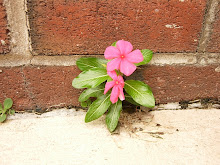Most beginning students have difficulty learning to create the first few rows of bead crochet.
Knowing which bead is next is most confusing and the beads seem to get into a jumbled mess.
Try my method and see if it helps.
You will do the chain stitch first, whatever number of beads you choose, and slip stitch them together to make a round of beads as seed in the photo above.
(5 beads in the round in photo)
Insert a small Philips head screwdriver through the opening in the middle of the round and push the round of beads to the bottom. The screwdriver head makes a nice ledge and the round won't fall off.

This photo shows the crochet hook under the loop of the first bead to be crocheted.

This photo is shot at a different angle and you can see how nicely the beads stay in the proper position.
After a few rounds, you may remove the screwdriver and hold the rope on its own.
A flat head screwdriver won't work as well because the flat end is wider than the shaft, making it difficult to remove the round of beads.

Examples of other items you may use instead of the screwdriver:
right to left: allen wrench, crochet hook, plastic straw.
Tip: the allen wrench works well because it has facets that allow your crochet hook to follow the flatness of the facet. The crochet hook is slippery, but again the flat area where you hold the hook allows the rope to settle there. The straw works well, but will bend if too much pressure is applied.
The diameter of the object you choose must match the inner diameter of the rope. In other words, a rope that is crocheted with size 11 seed beads with 8 in the round, will need a smaller diameter straw, or whichever object you use. Size 6 seed beads may need a larger object. Find one that works for you.














